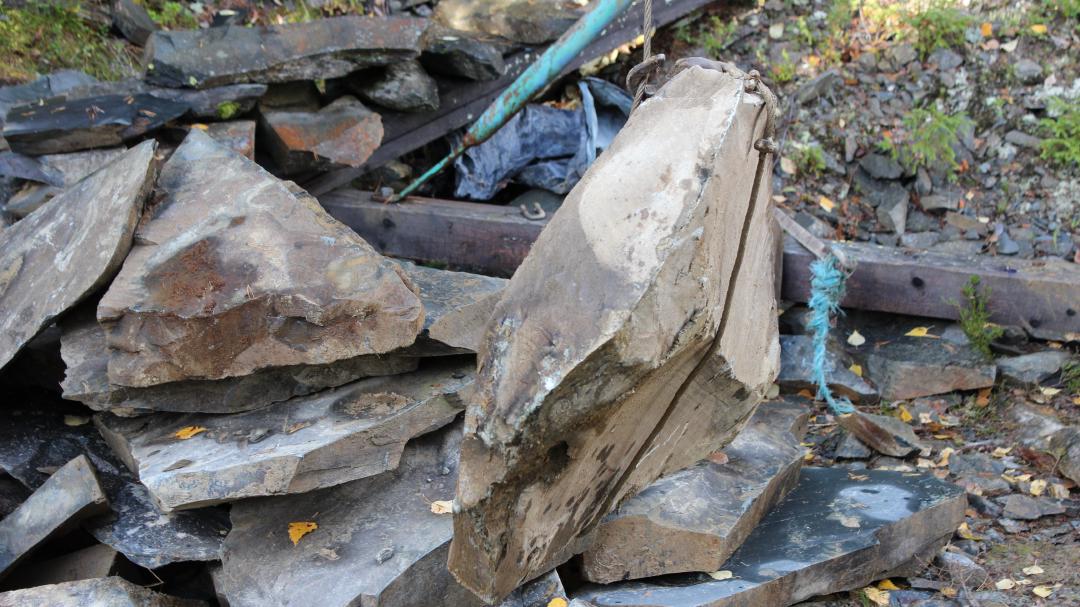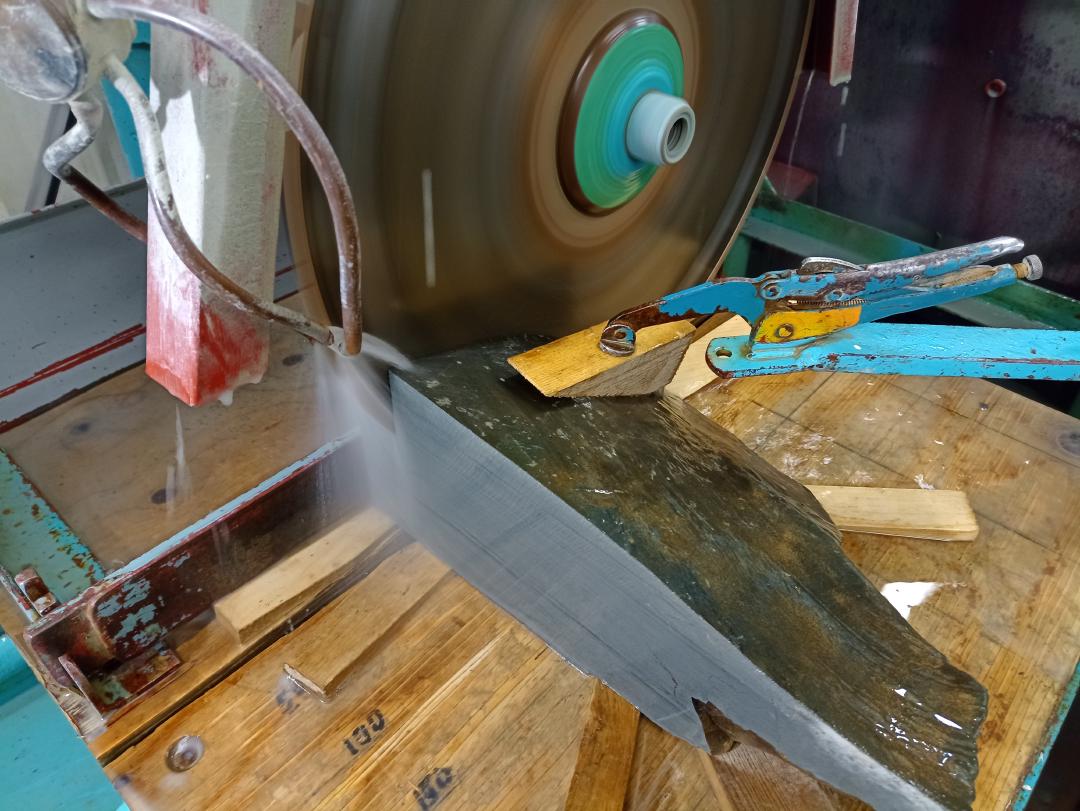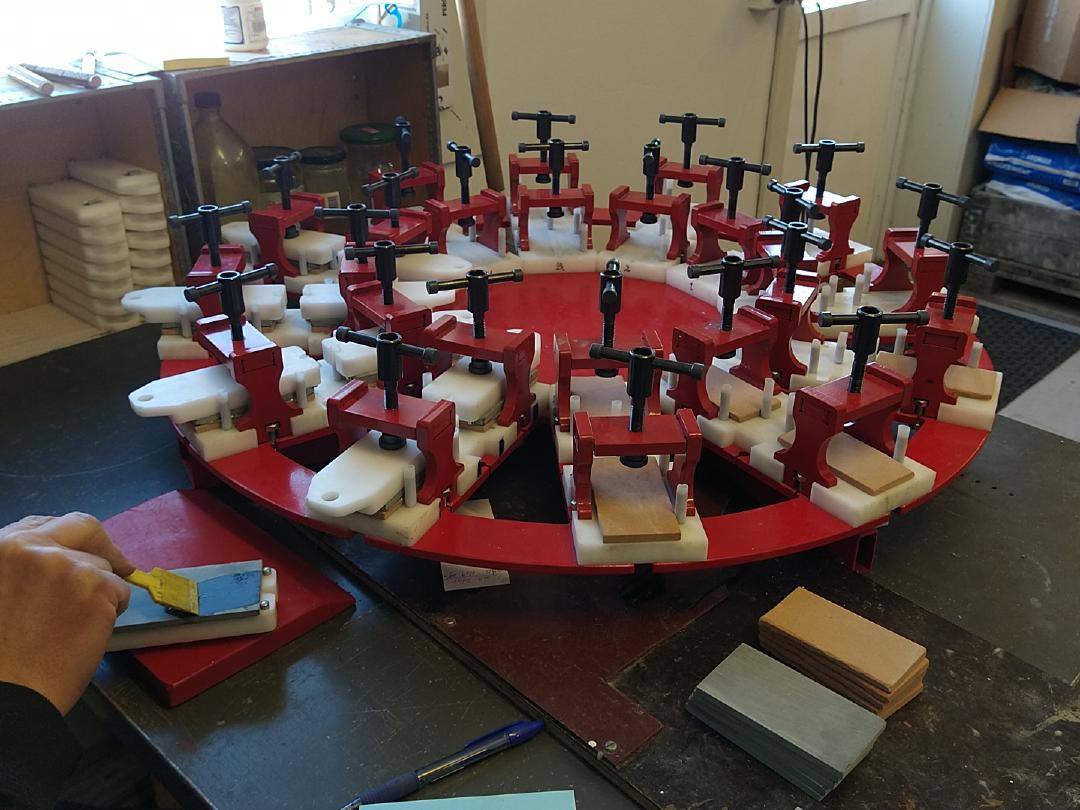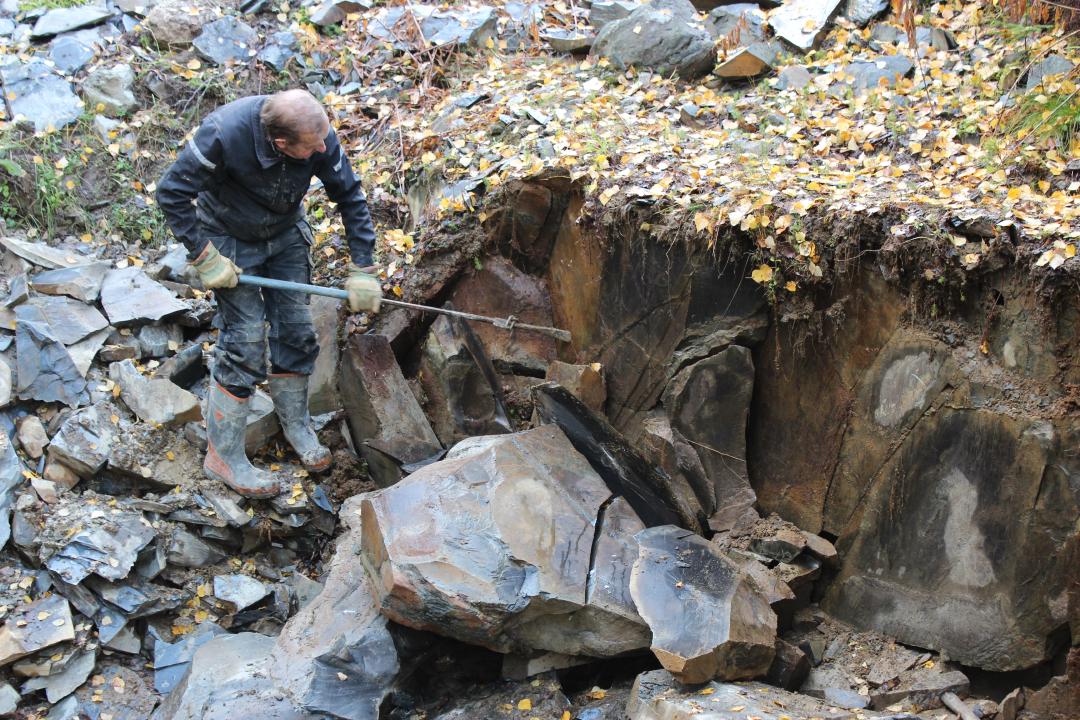Production - A Brief Summary
Production
Elements of Manufacturing
Film demonstrating whetstone manufacturing from the end of the 19th century until around 1970, during which the usage of electrical equipment had become more preferable. The recording is from 2019 taken at the whetstone sawmill in Österhocklan (Loos), originally constructed by Herman Borg and renovated in 1973. The waterwheel is from the now torn sawmill in Karlsmyr. Modern equipment is nowadays being used during the manufacturing of Loosbrynet. A diamond blade is employed which results in clean surface cuts; a planer is therefore not included during production. Our current manufacturing process is nevertheless reminiscent of the old one.
Loosbrynet: Present Day
The slatestones used in the production of waterstones are carefully selected and quarried in Loos from mines initiated during the 1800s and areas in their vicinity. Identifying possible cracks & unwanted minerals is often an uncertainty until stones are transported and cut through both of two saws, with continual checking and readjustments during the process. We estimate that around 90% of stones are discarded during quarrying, and further 90% become discarded during manufacturing. The saws used during production are adjusted after inspection according to the conditions of the stone in order to avoid cracks and impurities. A larger waterstone resulting from stones with throughout lesser impurities are rarer and require more time in order to produce. The current whetstone sawmill is located in Ryggskog (Loos), the place in which most whetstones were manufactured during the 1800s.
From Our Assortment
Example of current whetstones manufactured within the last few years. Products with the width of 30mm follow the common standard used during the 1800s, where length increased according to each inch. The length 100mm is sold as a pocket-whetstone within a leather casing whereas 175mm/225mm is manufactured with a handle, with the latter also having a sheath. Benchstones (larger whetstones) occur in varied sizes when the conditions of quarried slate are suitable.

Specified measurements are approximate and can vary slightly.




